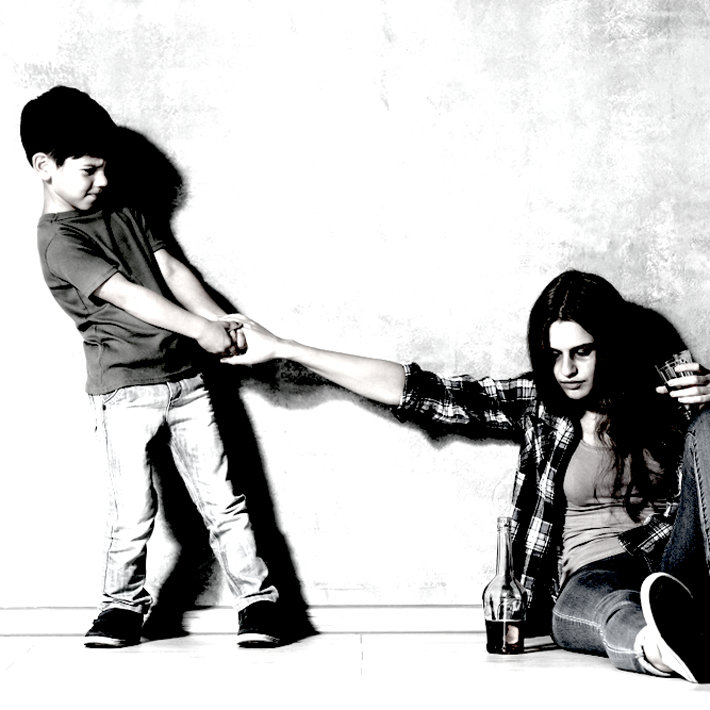The Drug Epidemic is Breaking our Foster Care System

Recently, I watched a video that showed a baby shaking and twitching horribly while withdrawing from opiates, a phenomenon commonly known as withdrawal tremors. It’s hard to watch anyone, let alone an innocent baby, go through this agony.
In America, a baby is born dependent on opioids every 19 minutes. But many doctors aren’t willing to do the work of alerting social services to thousands of these infants, many of whom come to harm in families shattered by narcotics.
The nation’s drug-addiction epidemic is resulting in a dramatic increase in the number of children entering foster care, forcing many states to take steps to care for children whose parents are no longer able. “We’re definitely in a crisis, and we don’t see an end in sight anytime soon,” said Angela Sausser, executive director of the Public Children Services Association of Ohio, a coalition of public child safety agencies in the state.
In many states across the country, addiction to opioid painkillers and heroin is pushing the crisis in foster care. In other parts of the country, abuse of methamphetamines is the leading cause. Regardless of the source, states are scrambling to deal with the fallout on children:
- In Georgia, where drug abuse is involved 40% of the time when children are removed from their family, the system is so overloaded that state child welfare officials have partnered with local community organizations such as churches to help foster families with everything from doing laundry to buying a crib.
- In Ohio, where more than 9,900 children are in foster care and nearly half of those taken into state custody last year had a parent abusing drugs, caseworkers are having a difficult time placing children with relatives. The report also says that by the time the children get to foster care, many of the adults in their extended family are addicted to opiates.
- In Massachusetts, there are 9,500 children in foster care. The opioid epidemic hit “every socioeconomic situation and every city, and the foster care system was ill-prepared to deal with it,” said the state’s child advocate, Maria Moissades.
“For everyone, the crisis happened so quickly, there was no time to gear up,” said Moissades, “No one knew it was going to be as big.”
Last week, U.S. Senate inaction effectively killed a bill that would have provided new federal funding for substance abuse programs for families with children at imminent risk of entering foster care.
Meanwhile, some states are taking extra steps to address the crisis.
In June, New Hampshire Gov. Maggie Hassan signed a law that defines a parent’s opioid abuse as child neglect, making it less difficult for child welfare authorities to intervene.
In December, Vermont Gov. Peter Shumlin called for $8.4 million to secure the foster care system in his state. “We’re losing the battle, not winning it. The children are the biggest victims,” Shumlin said. “We’ve lost babies to parents who beat them, strangle them, bang their heads against the floor, and sexually abuse them. And it’s happening because of opioid addiction.”
No Turnaround in Sight
National statistics don’t tell us how many children are removed from their homes because of a parent’s addiction. And there’s no national standard for how states report substance abuse and child neglect. But many state officials agree the surge in foster care cases is a result of the drug epidemic.
Five years ago, the number of children in foster care was on the decline. But the number of children in foster care rose 3.5% in 2014. Some states have seen greater increases. Georgia, for example, has seen a 25% increase.
This could be the result of a combination of factors, including stricter reporting of child abuse cases. For example, several years ago, Arizona was faced with a serious backlog of child abuse cases killing innocent children. The state revamped its child welfare system and hired more investigators; In 2014, the number of children removed from their homes increased 13.2% from the previous year.
Even more disturbing is the fact that these kids are getting abused at younger ages; the median age for a child in foster care was 8 years old in 2014, down from 10.6 in 2005. Infants (less than a year old) made up a bigger share of children going into foster care in 2014 than they did 10 years ago. And child welfare workers report that they are seeing a greater increase in infants in the past year.
This may be partly attributed to new federal laws requiring that hospitals notify child protective services of any babies affected by prenatal substance exposure. “Children are also staying in foster care longer, and more children are entering the system because of a parent’s substance abuse,” says Nancy K.Young, Ph.D. Director, Children and Family Futures, Inc. who in February testified before a U.S. Senate committee on the opioid epidemic’s impact on foster care.

Vermont saw a 16.4% increase in children entering foster care between 2013 and 2014, causing child welfare caseworkers to stock up on infant car seats to accommodate the sudden influx of babies entering foster care. In the past, the largest group of children taken from their parents had been teens. “Today, the state has more young children (under the age of 6) in foster care than at any other time in its history,” said Karen Shea, interim deputy director of the Vermont Department for Children and Families. “And drugs are behind the shift,” Shea said. Of the children under the age of 6 placed in foster care last year, more than half came from homes where abuse of opiates was prevalent.
What To Do
The solution is getting parents and potentially future parents off drugs—and that requires drug rehab. The next solution is educating future generations on the truth about drugs. Narconon Arrowhead is Narconon’s leading drug rehabilitation and drug education center for nearly half a century, and has proven time and again that if a person can identify and overcome the initial problems that lead to their addiction, they can ultimately regain their self-respect and self-control.
First, Narconon doesn’t have “patients” or “victims” or “addicts,” they have students—students who are learning to live successful, drug-free lives. Here every detail has been taken into account to give the students the stability and comfort they need to help free themselves from addiction and rebuild their lives without drugs.
Narconon Arrowhead is designed to deliver the uniquely effective Narconon Program—from custom-designed spaces for drug-free withdrawal, to the New Life Detox Center with our proven methodology to eliminate the drug residues that stimulate cravings and contribute to relapse. The facility sits on 250 acres bordered by beautiful Lake Eufaula and a state park. Here at this distraction-free setting, they offer the one-on-one care and personalized attention that is often critical to accomplishing the goal of long-term success.
Since 1992, Narconon Arrowhead in Oklahoma has been accredited by CARF (the Commission on Accreditation of Rehabilitation Facilities). CARF is an independent, nonprofit organization dedicated to ensuring the quality of drug rehabilitation services by onsite inspection, analysis, and recommendations.
Should you or someone you know suffer from drug or alcohol addiction, please contact us and speak with a Narconon Arrowhead intake coordinator.


